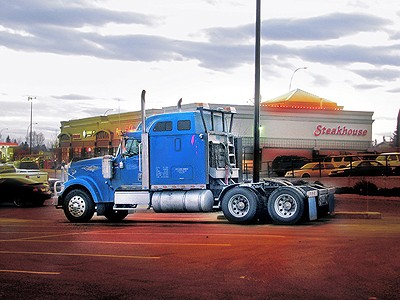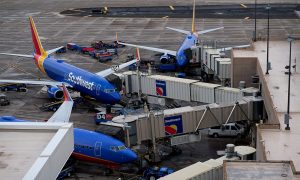A couple of new reports about the trucking and logistics industries show how the mundane task of moving cargo is a reflection of our overall economy. And since trucking touches virtually every household, small business and other part of our audience, a look at how your local trucking firms and drivers fare should be an engaging way to frame an economic update.
Here’s a neat article from Slate, “What trucking statistics – yes, trucking – can tell us about the economy.” It refers to the Ceridian Pulse of Commerce index, a product of the UCLA-Anderson School of Management and Ceridian, a business-services firm, which is rather amazing: Researchers use payment-system data to track real-time diesel-fuel purchases to monitor the movement of finished goods and raw materials. In May, the pulse fell 0.9 percent, which analysts said ended a seventeen-month string of improvement.\
Other commentary with the May report would be good fodder for interview questions of your area merchants, factories and businesses; it said that growth from June 2009 to July 2010 was driven by inventory restocking rather than new or expanded business. Check out the entire site and related reports for a lot more interesting information.
Meanwhile, a couple of recent reports paint a variety of scenarios for the health of the trucking industry in coming years. Despite the conflicting forecasts, you can glean some meaty questions for local firms by reviewing analysis such as the State of Logistics report released earlier this month by the Council of Supply Chain Management Professionals. (The report is not available directly from the council’s website but the group readily e-mailed it upon request.) It says growth is freight volume is lagging the increasing costs of hauling cargo, especially rising fuel prices.
By contrast, this article from Fleetowner.com, “Trucking looking up over next year,” cites a couple of other studies that show carriers forecasting rate increases and more Class 8 trucks (what we think of as semi-trucks or tractors) in demand.
ACT Research, one of the firms cited, said that a backlog of heavy-truck orders in North America grew in May, and predicts continued strong demand; check out their recent press releases for more background. An ACT Research spokeswoman said company analysts are generally willing to talk with reporters about their industry forecasts. FTR Associates is another industry-research firm; it tracks the movement of freight and could be a useful contact.
Other areas to check out: What do carriers think pending Department of Transportation Hours-Of-Service rules will due to truck and driver demand, since the rules will mandate more break time and fewer hours behind the wheel?










